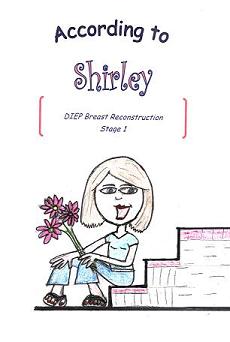
After breast reconstruction surgery, patients are bound to experience some sort of recovery pain or discomfort.
This mild pain often leads patients to ask questions such as…
- How long will the pain last?
- Is my pain normal?
- Should I call my doctor?
At the time, a person’s pain or discomfort might seem unusual or scary…and the last thing we want is for patients to worry.
For that reason, we’ve decided to put together the answers to a few of our most common pain-related questions.
Find out what our surgeons and staff have to say about the following concerns…
What Are Your Suggestions for Muscle Spasms after Breast Reconstruction?

Question: I had breast reconstruction on my left breast in 2006. I have had muscle spasms in it ever since. Recently they have gotten bad again.
Any suggestions?
Answer: I’m sorry you are having problems with your reconstruction.
You didn’t mention if you were reconstructed with an implant or with your own tissue, so I will answer as if you are reconstructed with an implant. Please let me know if I have assumed wrongly.
There are several potential reasons why you could have spasms.
If the implant was placed under the pectoralis chest muscle, it can lead to pains in the pectoralis muscle or other muscles, as the muscle is no longer functioning in precisely the way it was designed to. Most people tolerate the implants well, but there is no question some have more problems than others.
The muscle can also sometimes separate from attachments to the chest wall over time, which could cause changes in symptoms.
Additionally, if you are radiated, this could potentially cause additional problems, as the muscle may be less flexible.
I’m Having Pain after My Last Latissimus Flap/Implant Reconstruction. What Can I Do Now?

Question: I was diagnosed with breast cancer in 2011 and had a mastectomy on my left side followed by chemo.
In 2014, my mammogram began showing tumors and I would have an ultrasound every time. This caused panic attacks and I choose to have my right breast removed because the type of cancer I had was Stage 4 Aggressive.
In April 2015, I had a bilateral latissimus flat and received implants. Now I am experiencing pain across my back where I was cut and my chest gets uncomfortably tight.
The site of the drainage tube is swollen and doesn’t feel good. I stopped seeing my reconstruction doctor because he did things I was not informed of. I am worried because I do not know what is going on anymore.
Could you please advise me as to what might be going on or what to do?
Answer: I’m sorry you are continuing to have problems, but you are not alone.
I can’t speak about your situation specifically because I haven’t examined you, but here are some thoughts in general about patients with symptoms like yours.
There is no question that many people with implants describe symptoms such as yours. Often, there is no discernible reason why they should feel discomfort, but they do. Nonetheless, many of them feel relief when the implants are removed. This does not mean that you would or should, it is just an observation.
The latissimus flap can be done with or without dividing the nerve that makes it contract. I have known some patients with latissimus flaps done without dividing the nerve to have discomfort associated with the muscle contracting. Some have experienced relief when the nerve was subsequently divided. Obviously, I don’t know if this is your situation or not.
Sometimes people have complex, persistent pain after surgery or injury which is out of all proportion to what would be expected. This can be difficult to treat but thankfully is rare.
When evaluating a patient with symptoms like yours, we usually start with a careful history and physical evaluation.
Sometimes, especially if we have concerns about implant rupture, fluid collections, infection, etc., we then get an MRI and/or CT scan. Following the complete evaluation, we then decide together how to proceed.
Are These Normal Problems to Have 2 Years after a Breast Reduction?

Question: I had a breast reduction over two years ago. It still feels like I have scar tissue in some areas and nipple tends to be a little sore at times.
Is that normal?
Answer: No, that’s not normal, and I’m sorry you’re having to endure it.
I can’t tell what is going on by your description, but it’s possible that you have some residual dead fat in your breasts which has not been resorbed.
An MRI scan would be the best way to determine this.
It’s also possible that you have pain for no discernible reason, which is unusual, but it happens from time to time. That doesn’t mean it can’t be treated, however, as pain therapists can be very effective in helping manage that type of pain.
Do you have breast reconstruction questions? Send us your questions here!














